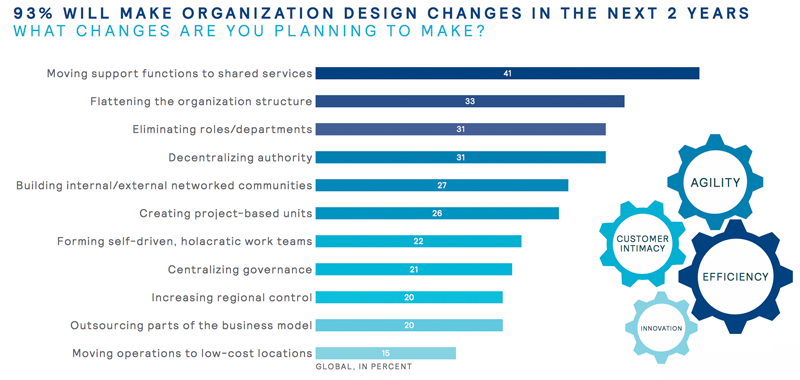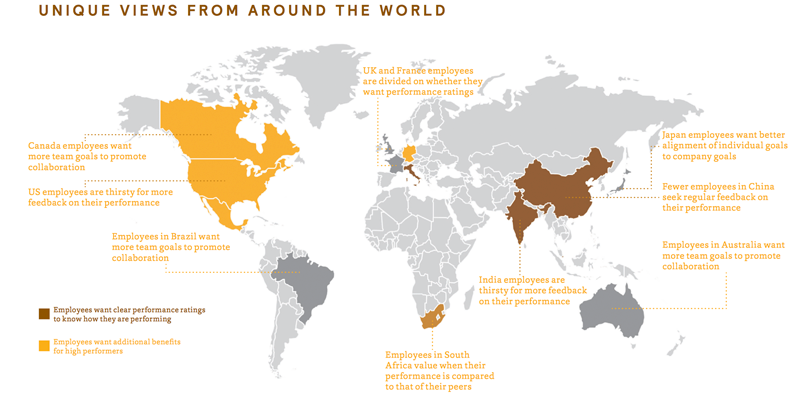The ‘Change-Agile’ Organization: Growth Through Employee Empowerment

A change-agile organization prioritizes a nimble, flexible culture to stay ahead of rapidly changing market trends.
Photo: Shutterstock
Disruption rules the world of work these days as technology and demography transform the business models of organizations. For decades, organizations have been fighting the war for talent—yet they’ve taken an incremental, evolutionary approach in the face of revolutionary change.
With multiple generations in the workforce, and as mobile technology frees workers from their desks, firms are challenged to change rapidly. As Mercer’s Talent Trends 2017 Global Study shows, 93 percent of organizations worldwide report they are planning to redesign their structure in the next two years—yet only 4 percent of business executives say their organization is “change agile.”
But do they have a true grasp of what change agile means? Digitization, robotics, and AI—artificial intelligence—are, understandably, on C-suite minds and tongues as technological forces wreak havoc with traditional business models, making it all too easy for executives to focus on superior technology as the solution to ensuring competitiveness. The organizational risk lies in overlooking the human factor.
Indeed, business growth relies on engaging and empowering the workforce. Despite headlines touting either robocalypse or robotopia, it still takes employees armed with the right skills and opportunities to develop innovative solutions to advance their businesses—and their own careers.
To that end, the Talent Trends 2017 Global Study shares insights from more than 7,000 perspectives, comparing the views of senior business executives, HR leaders, and employees from organizations around the world. The report assesses significant gaps in alignment, identifies several critical disconnects concerning change, and makes recommendations to capture growth.
Most notably, despite organizations’ plans to transform, HR leaders do not have organization or job redesign on their list of priorities for 2017. The top priorities of HR leaders—attracting top talent externally, developing leaders for succession, identifying high potentials, and building skills across the workforce—reflect familiar imperatives, but do they align with executive goals for the more substantial workplace change required of 21st-century organizations if they are serious about thriving, not just surviving?
While 70 percent of HR leaders surveyed express confidence in the talent management processes they have in place, employees are still looking elsewhere for new opportunities. Slightly more than one-third (34 percent) of employees say they plan to leave their current role in the next 12 months, even though they are satisfied in their jobs. Equally concerning is that those employees not planning to leave report they are less “energized” in terms of bringing their authentic selves to work and therefore less likely to thrive in a collaborative and innovative workplace.
What Does it Mean to be Change Agile?
As the phrase implies, a change-agile organization prioritizes a nimble, flexible culture to stay ahead of rapidly changing market trends. Thus, employers who embrace change and empower their workforce will be more successful.
However, according to the Talent Trends 2017 Global Study, the HR agenda for 2017 demonstrates some misalignment that may fail to leverage what employees report as important, which can spell the difference between a thriving and a stagnating workforce. Here are some key findings from the study:
Health over Wealth—While 61 percent of employees globally rank their health as more important than their wealth or career, and 47 percent indicate they expect their workplace to become more focused on employee health in the next few years, health and well-being ranked second to last on HR leaders’ list of top talent management priorities for 2017. Navigating the changing talent ecosystem by redesigning future roles and supporting employees’ health and wealth needs is becoming a market differentiator.
Wealth over Career—While nearly all (97 percent) of employees report that they want to be recognized and rewarded for contributions beyond the organization’s financial metrics, only slightly more than half (51 percent) think their company does such rewarding well. Furthermore, fair and competitive compensation ranked at the top when employees were asked what would make a positive impact on their work situation, yet rewards ranked near the bottom of priorities for HR leaders.
Gig is Big—Flexible work arrangements are important to employees, with more than half reporting that their direct managers and company leaders are supportive of it (61 percent and 57 percent, respectively). Nevertheless, 50 percent of employees believe working remotely or part time can adversely impact promotional opportunities.
And while more than three-quarters (77 percent) of full-time employees would consider working on a contingent or contract basis, neither business executives nor HR leaders have embraced these new forms of employment as much as expected or desired. Both the C-suite and HR leaders agree that they do not expect the “gig economy” to have a major impact on their business in the next two years. But the remarkable growth of the gig economy makes it a risk for any organization to ignore opportunities for people to work more independently.
A Relevant Experience—Beyond flexibility, personalization is essential for creating an experience that resonates with employees. Less than half (49 percent) of employees say that their company understands their unique interests and skills, while 53 percent want their company to increase this understanding and help them invest in themselves. Employees are increasingly bringing a consumer expectation to the workplace, since it is how they engage in almost every aspect of their lives. Consumer-grade personalization can encourage a more authentic environment in which employees can excel.
Digital Divide—In technology, HR lags expectations of both executive leadership and employees. Business executives (61 percent) believe technology at work, including automation, robotics, machine learning and wearables, is the workforce trend likely to have the most impact on their organizations in the next two years. Yet, less than half (49 percent) of HR professionals agree. Employees report that just one in five organizations provides a digital experience for interacting with HR.
These findings underscore the need for organizations to commit to a change-agile strategy if they intend to remain competitive—and that calls for business executives and HR leaders to collaborate to engage and empower their workforce. At a time of revolutionary change, evolutionary progress no longer wins the race.






